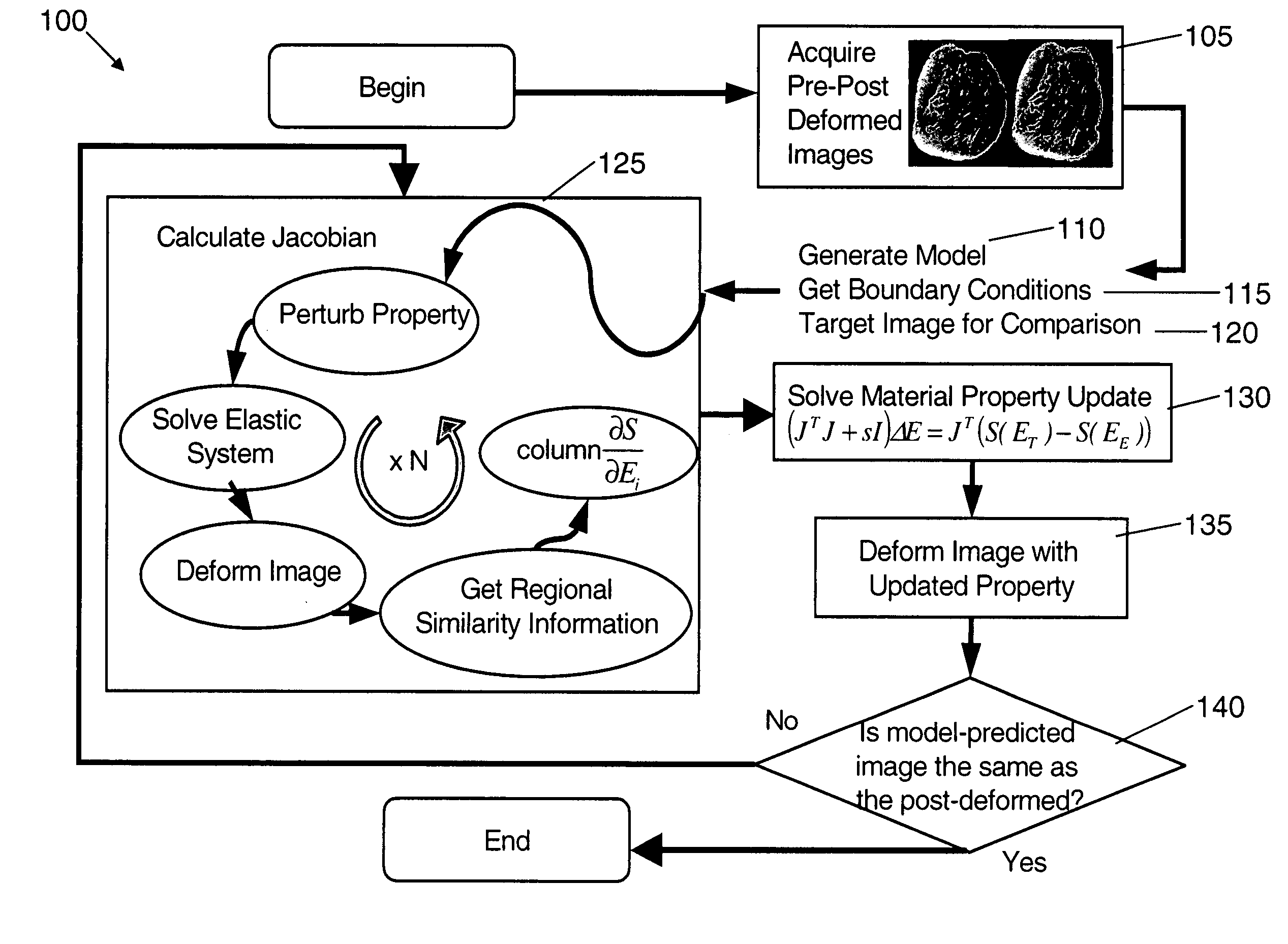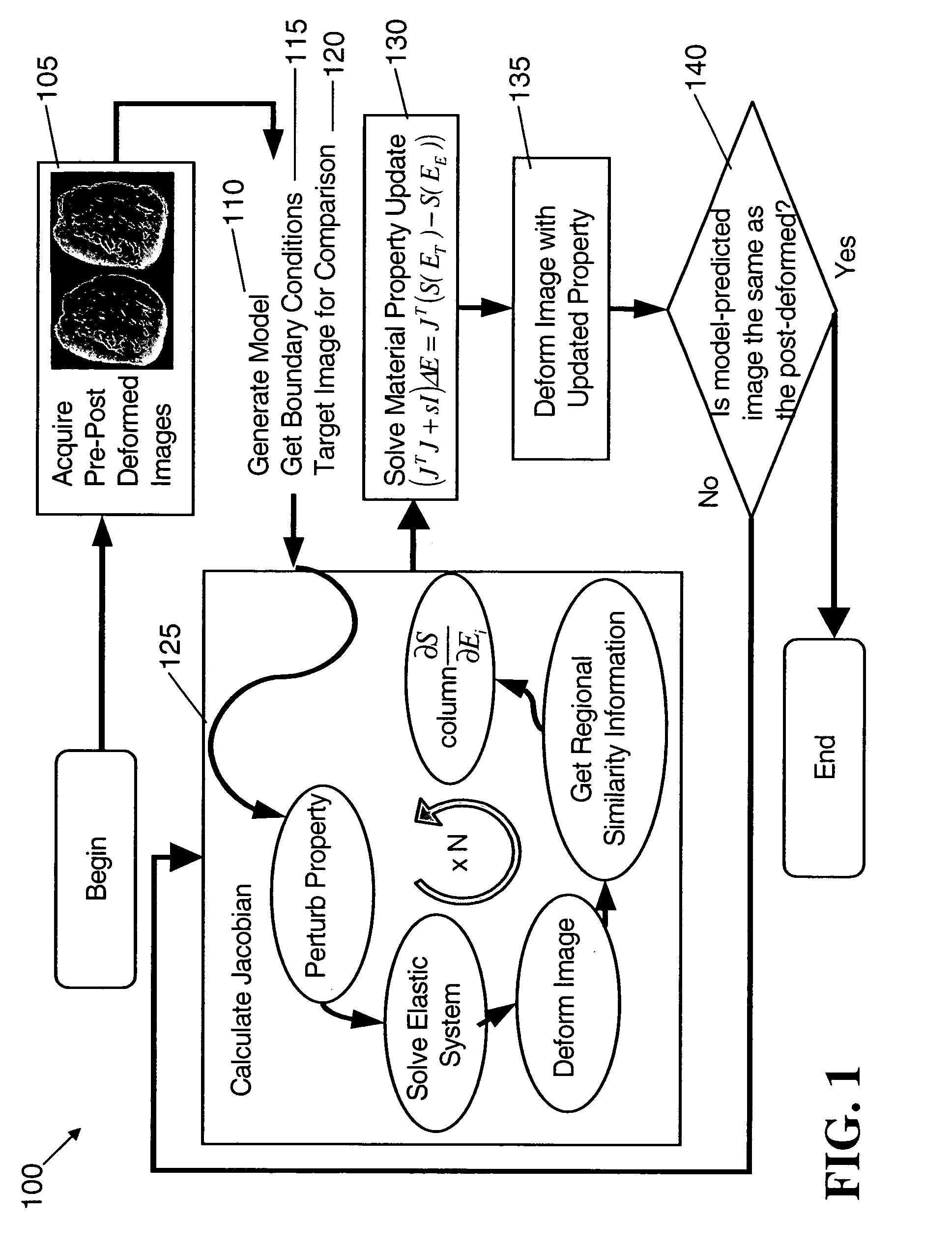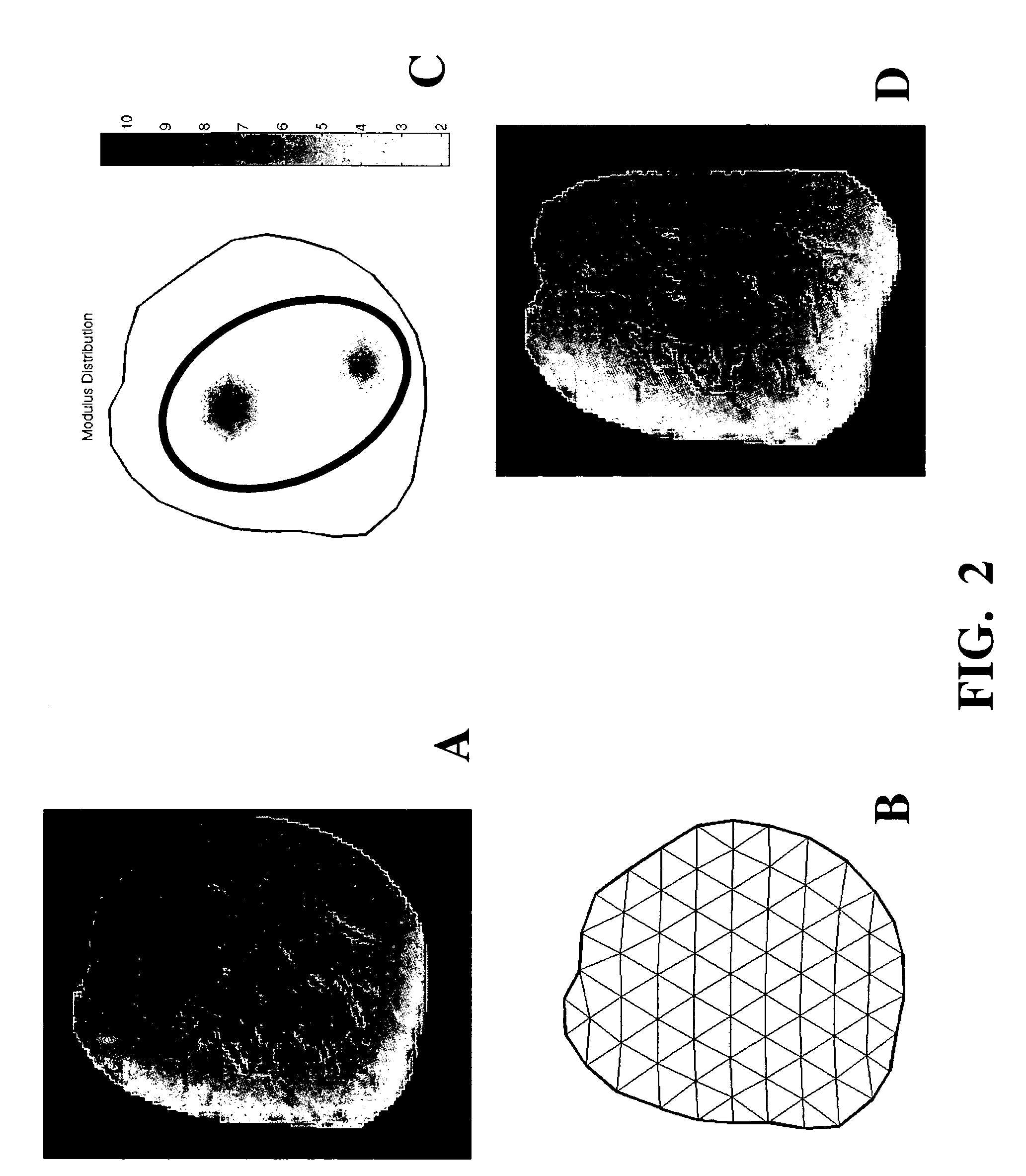Elastography imaging modalities for characterizing properties of tissue
a tissue and elastography technology, applied in the field of breast cancer detection, can solve the problems of not showing clinical significance with respect to the detection and differentiation of cancerous tissue in the breast, the method of characterizing tissue has yet to be realized, and the overall capability has yet to be fully reported. , the resolution, the diagnostic value, and the effect of overall capability
- Summary
- Abstract
- Description
- Claims
- Application Information
AI Technical Summary
Benefits of technology
Problems solved by technology
Method used
Image
Examples
Embodiment Construction
[0056]Elastography uses finite elements, mutual information, and an iterative image reconstruction framework to produce images of elastic modulus (i.e., Young's modulus). The present invention represents a fundamental shift away from an objective function based on displacements / forces to that of one based solely on image similarity. By reformulating the inverse problem in this manner, the technique departs from a traditional elastography method to one more closely related to the recent advances in non-rigid image-registration. Since the basis of this new image reconstruction framework is not a function of any particular imaging measurement protocol (e.g., MR phase-encoding of displacement, or US cross-correlation methods, etc.), the approach is independent of any specific imaging modality. Results demonstrate: (1) the encoding of elasticity within a locally-defined image similarity measure, (2) the framework of the elasticity imaging algorithm, and (3) some preliminary elasticity re...
PUM
 Login to View More
Login to View More Abstract
Description
Claims
Application Information
 Login to View More
Login to View More - R&D
- Intellectual Property
- Life Sciences
- Materials
- Tech Scout
- Unparalleled Data Quality
- Higher Quality Content
- 60% Fewer Hallucinations
Browse by: Latest US Patents, China's latest patents, Technical Efficacy Thesaurus, Application Domain, Technology Topic, Popular Technical Reports.
© 2025 PatSnap. All rights reserved.Legal|Privacy policy|Modern Slavery Act Transparency Statement|Sitemap|About US| Contact US: help@patsnap.com



